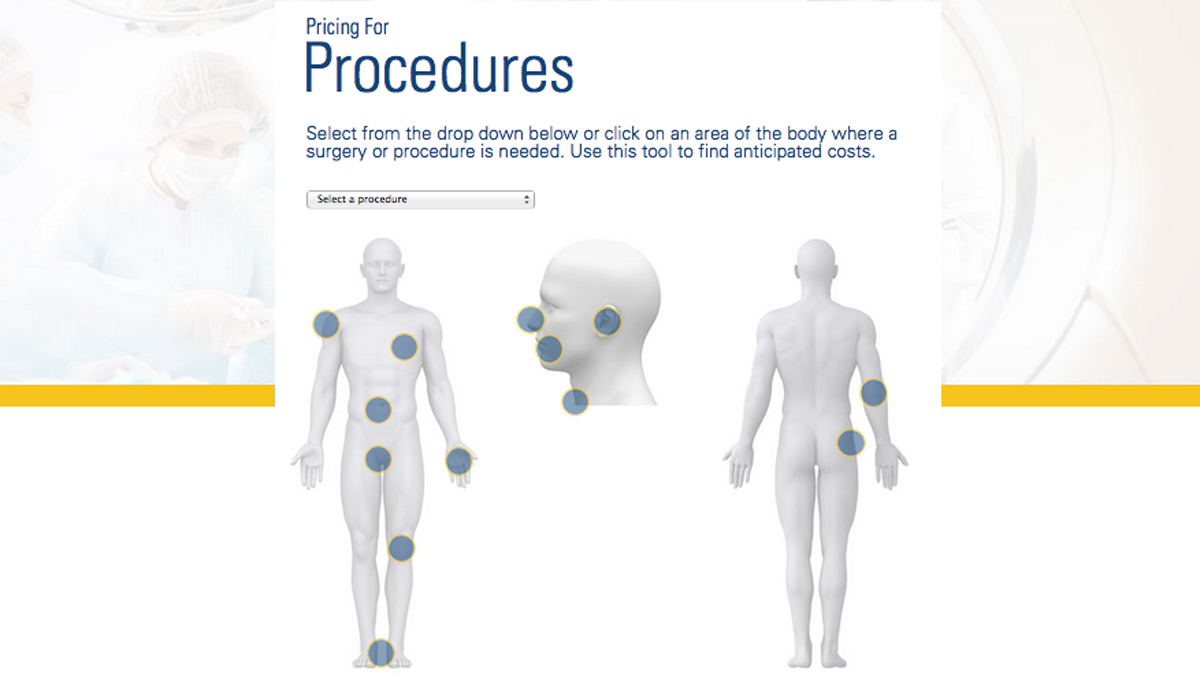How much will that meniscus repair cost? Bethlehem hospital posts a price list

(Electronic image via pricechecker.slhn.org)
St. Luke’s University Health Network, headquartered in Bethlehem, Pa., has launched a rather unusual initiative: It’s posting its retail prices for about 80 common outpatient medical procedures and tests online, listing everything from MRI’s to meniscus repairs to endoscopies.
The way pricing works in health care can be fragmented and hard for patients to get in advance. It can vary by insurance contracts, which are often private. Doctors and hospitals may bill for their part of the service separately.
But St. Luke’s vice president of finance, Francine Botek, says the prices it’s disclosing online represent the whole package.
“That would be the surgeon to perform the procedure, the operating room procedure room time, any x-rays necessary during the procedure, any radiologist reading fees during the procedure, the anesthesiologist and any post op visit at the physician office,” she said.
Under the new initiative, called St. Luke’s Pricechecker, participating doctors agree to take a fee from the hospital network instead of issuing a separate bill. Many are already employed directly through St. Luke’s, says Botek, making coordination easier.
The initiative, which only applies to St. Luke’s facilities in Pennsylvania, is in large part a response to patients who are paying more out of pocket for their care. Many are asking about cost, says Botek. In addition, bills are often going unpaid or being sent to collections.
“It was our desire to be proactive, given the rise in higher deductible health plans,” said Botek.
Botek says prices are competitive, even a bargain, but to be eligible, patients have to pay for the procedure up front. The hospital still goes through a patient’s insurance, so payments would apply to a patient’s deductible. If the negotiated rate and what a patient would be responsible for is more than that posted retail price, then Botek says paying that retail price could be a good option. The hospital would write off the difference. If it turns out that the price is cheaper through a patient’s insurance, the hospital would refund the difference to the patient.
Hospitals and others in the health industry have been putting a greater focus on patient financial needs in recent years. Some have been experimenting with different transparency tools, says Francois de Brantes, with the Health Care Incentives Improvement Institute. He wasn’t familiar with St. Luke’s initiative but thinks it stands out.
“I haven’t seen hospitals be this aggressive in saying, ‘Here’s the package price. Here’s what we’re suggesting, so here are some ways of going in on a guaranteed price,'” he said.
While de Brantes likes the concept, he cautions “buyer beware”: procedures often involve additional visits and care, which aren’t included in the list price.
WHYY is your source for fact-based, in-depth journalism and information. As a nonprofit organization, we rely on financial support from readers like you. Please give today.

